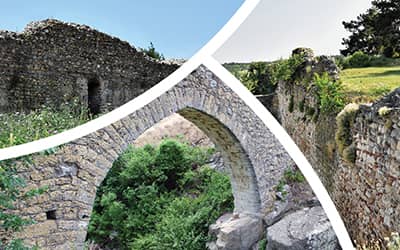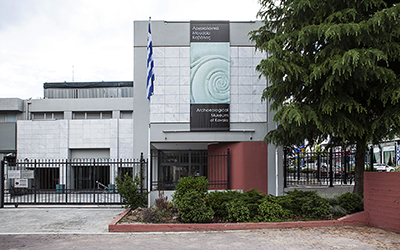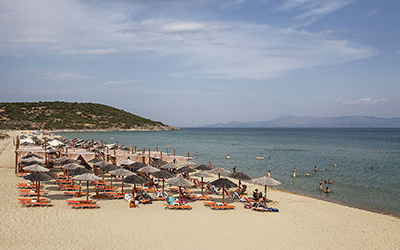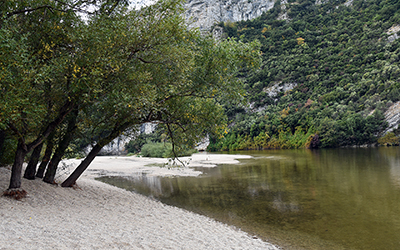
Route's points of interest
You may also like
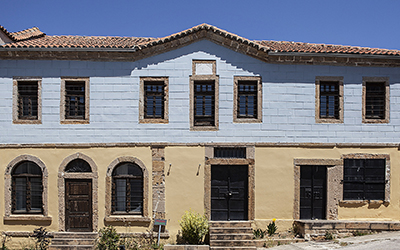
Abdera
Town on the coast of Xanthi, near the Nestos river. It is built near the ancient city of Abdera which dates from around the mid-7th century BC. According to mythology, the city was founded by Hercules in honor of his friend Abderos. Avdera was the homeland of the philosophers Democritus, Leucippus, Hecataeus, Anaxarchus, thw sophist Protagoras, and the astronomer Vion. West of the port, is Skala of Avdera with a large white sandy beach, which is an ideal destination to enjoy the sunset. On Shrove Monday, there is a kite flying competition and feast with traditional music. In the last ten days of July, Democritia cultural events take place, which last for five days.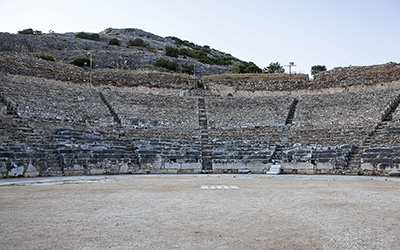
Ancient theater of Philippi
The emblematic theatre in Philippi The Ancient Theater of Philippi was built by Philip II in 356 BC, immediately after the conquest of the city by the Macedonian king. After the conquest of the city by the Romans, during the 1st and 2nd c. AD, the theater underwent many changes to accommodate a larger number of spectators and to adapt to the particular Roman spectacles. The most important operations took place in the 2nd century AD with several additions of auxiliary spaces as well as the construction of the scene, which was designed with two floors to the orchestra and three floors on the exterior of the theater. At this point it was decorated with marble reliefs depicting the female followers of Bacchus, the maenads, satyr masks and other symbols of god Dionysus. In the 3rd century AD the theater was converted into a typical Roman arena with all the necessary modifications for the needs of the new spectacles and for the safety of the spectators. The figures related to the duels, Mars, Victory and Nemesis, were carved then. Unfortunately, in the following centuries, the predominance of the new religion, which was opposed to violent spectacles and theatrical performances in general, would bring the desolation of the theater, at least as a gathering place for spectacles. The great earthquake of the 7th century AD and the fire that destroyed the stage rendered whatever material could be used for second building use. The parts of the theater that remained in good condition housed other commercial activities. After rescue excavations and restoration work, the ancient theater hosts performances of the Philippi Festival every summer. Ministry of Culture DIAZOMA EMT Greece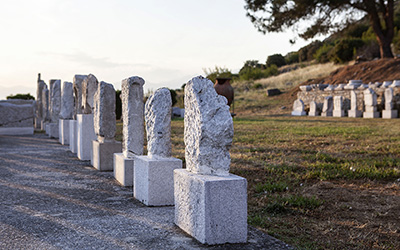
Archaeological Museum of Philippi
Masterpieces bring to life the history of a great city of antiquity The Archaeological Museum of Philippi houses all the findings from the excavations of this important city of Antiquity and the first Byzantine years. The exhibition is divided into two large sections. On the ground floor of the Archaeological Museum the visitor can see the findings from the excavations that come from the area before its colonization, from the prehistoric period to the 4th century BC. The most important and numerous findings include coins, jewelry, sculpture and vases from the founding of the colony to the end of the Roman period. The findings from the Christian city are exhibited on the first floor of the museum. Among them are inscriptions, parts of buildings, mosaics, vases and coins from the early Christian and early Byzantine years, which coincide with the prosperity of the city, until the recession (7th century AD) and its abandonment following the Turkish conquest in the late 14th century. With the aid of visual material, the visitors complete their acquaintance with the city of Philippi. Greek Archaeological Museums Ministry of Culture EMT Greece Visit Kavala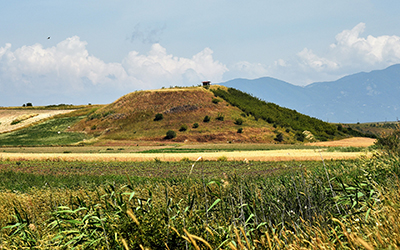
National Park of Eastern Macedonia and Thrace
The National Park of Eastern Macedonia and Thrace is a wetland complex that extends to about 930,000 acres. It consists of Nestos Delta as well as Vistonida and Ismarida lagoons. The national park was founded in 2008, with the view of protecting the rich flora and fauna of the area. There are two information centers for the national park: the Information Center of Lake Vistonida, at the western entrance of Porto Lagos, as well as the Information Center of the Nestos Delta, in Keramoti of the Regional Unit of Kavala. National Park of Eastern Macedonia and Thrace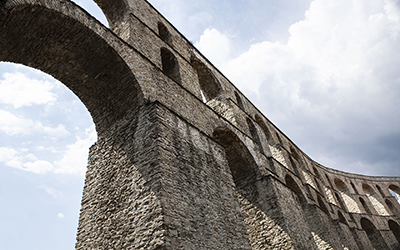
Kavala
The geographical location, the natural port and the location of Kavala close to Mount Paggaio made the city one of the oldest ones in the region. It is the capital of the Kavala prefecture. In ancient times, it was called Neapolis (new town) and in Byzantine times Christoupolis (town of Christ). Since 1470, it has had its current name. It has one of the largest passenger ports (Apostolos Pavlos) as well as one of the most important commercial ports (Philipos II). It also hosts an International Airport (Alexander the Great) and is the headquarters of the Diocese of Philippi, Neapolis and Thassos. The city is built amphitheatrically at the foot of Mount Symbol. In the wider area, Paul spread Christianity in Europe (49 AD) and baptized the first European Christian. The history of Kavala dates to prehistoric times. After the Greco-Turkish War (1919–1922), Greek refugees from Eastern Thrace, Eastern Romilia and Asia Minor settled in the city. Along with their traditions, they brought along tobacco cultivation, an activity which led the city to great economic development. Important sites by historical periods include the Ottoman Ibrahim Pasha Mosque, which was converted into the orthodox church of St. Nikolaos, the Halil Bey Mosque, the Kavala Imaret, the Mehmet Ali Pasha Mansion, the Kavala Fortress, Kamares, which used to be the old aqueduct of the city, the 5th Kavala High School, built by the Turkish tobacco merchant Patsatzik, and many more. Kavala, as a city of tobacco processing, hosts several tobacco warehouses, such as the Municipal Tobacco Warehouse, which is part of the Ottoman building complex, the Austro-Greek Complex, the Shopping Center of Kavala, which is also an ex-tobacco warehouse, the Big Club, the Old Town Hall (Tokos Mansion), the City Hall of Kavala, the Vix Mansion and others. The Catholic Church of Apostle Paul-Lazaristes Monastery, the Cathedral of Timios Prodromos-Agios Ioannis and several museums, such as the Archaeological Museum, the Historical and Folklore Museum, the Museum of Refugee Hellenism, the Municipal Tobacco Museum, the Naval Museum of Kavala, and more are also very interesting. Kavala is the birthplace of Vassilis Vassilikos, Greek writer of the political novel Z, and of Olympic javelin thrower Anna Verouli. Visit Kavala Municipality of Kavala Up Drones (video)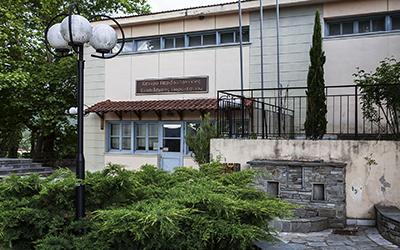
Paranesti
Village of the region of Drama, next to the river Nestos. The village has special natural beauty, rich flora and fauna. There are also ruins of ancient monuments and arched bridges and churches. JTI Target (video)
Platanotopos cave
North of the settlement at the foot of the Paggaio Mountain there are many caves and rock shelters. The Platanotopos Cave consists of two chambers. Its interior was in use in ancient times as ceramic sherds of prehistoric and historical times have been found. It is not an archeological site open to visitors.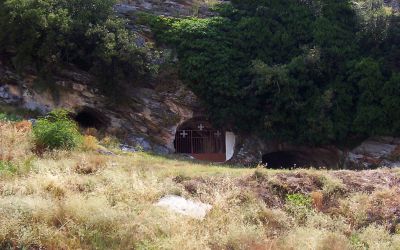
The Trypes of Mary cave
In the devotional cave of the Virgin Mary In the proximity of the southeastern houses of the settlement of Moustheni, at the southern foot of Mount Paggaio, the 'Trypes" (holes) of Virgin Mary cave is located. The cave has three entrances and is used as a place of worship. It had a similar religious use in the past. According to local traditions, the cave communicates internally with the Monastery of Panagia Eikosifoinissa located at the northern foot of Paggaio near Nikisiani. It is speculated that the three cave openings may have been mining galleries from antiquity. Ministry of Culture
Stavroupolis
City next to the Nestos. It is a tobacco cultivation center and has several old stone houses with architectural interest as well as newer ones with neoclassical influences. Here you can find opportunities for kayaking, car racing, climbing, archery, etc. It is the place of origin of Katerina Sakellaropoulou, president of Greece. Municipality of Xanthi (video)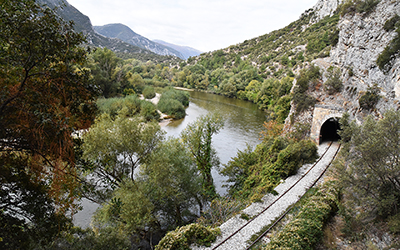
Nestos Straights
The impressive relief of a river The Straits of Nestos is a narrow valley or wide gorge formed by the flow of the waters of the river Nestos. It extends parallel to the riverbed of Nestos, occupying approximately 23,800 acres, between the settlements of Stavroupoli and Toxotes. The impressive relief of the area, with steep rocky areas and caves, and the intense meanders of the river create a natural landscape of special beauty. The Straits of Nestos are an important habitat with a great variety of flora and fauna. It is an area of exquisite beauty. It has been designated as a NATURA 2000 area. Within this magnificent landscape, almost on the edge of the rocks and parallel to the riverbed, the railway line crosses a magnificent landscape. The line connects Thessaloniki with the towns of Thrace. Apart from the train, however, a path suitable for hiking links the settlement of Galani with Stavroupoli and Leivaditis. Visitors to the Nestos Straits are lucky, since in several parts there are opportunities for canoeing, kayaking, rafting, ziplining, and hiking in an environment of incomparable beauty. Suggestions for Canoe Kayak and Rafting in Drama Nestos-Rodopi trail (topoguide) Municipality of Nestos (video)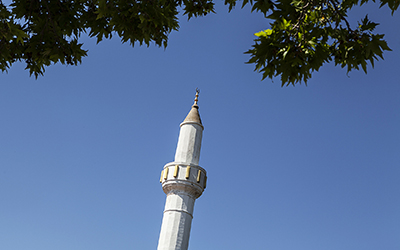
Toxotes
Settlement in the region of Xanthi. After the Treaty of Lausanne, refugees from Eastern Thrace and Asia Minor settled here. The name of the village (meaning "archers") probably came from its older name, Oxylar, from the Turkish okcu, which means "archer". The area is ideal for alternative tourism and activities such as canoeing, climbing, archery, cycling and walks along the Nestos. The route (Stavroupolis-Toxotes) is easy and the descent takes about 4.5 hours. During the descent, the visitor has the opportunity to enjoy the natural landscape and to observe the birds. Visit Thrace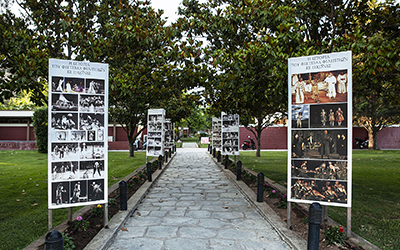
Filippi Festival
It is one of the greatest cultural events in the area of Kavala; it is held in July and August mainly at the Ancient Theater of Philippi. Certain events also take place at other venues all over the city: the Fortress, the Imaret, the Old Music, the Gardens of Mehmet Ali, schools, temples, and folk cafes, but also places around the archeological site of Philippi, such as the Mud Baths of Krinides. Since 1957, it attracts thousands of Greeks and foreigners who visit it, to attend performances of ancient drama, but also contemporary plays, concerts of great artists, dance groups and dance performances, poetry evenings, exhibitions, and various other events. ALL ABOUT FESTIVALS Visit Kavala https://www.kavalagreece.gr/en/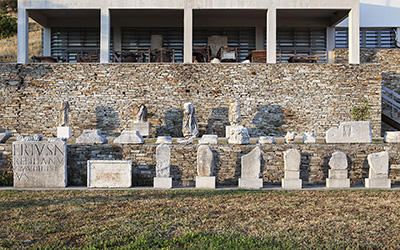
Philippi
An important city of Macedonia The city was founded by settlers from Thassos Island, in 360 BC as the area was fertile, it provided abundant timber, it was rich in precious metal deposits and of course it was strategically located. These were the reasons why the king of Macedonia, Philip II, agreed to help the new inhabitants when they asked for his help, while being attacked by the Thracians. In 356 BC Philip II captured and fortified the city, giving it his name. A period of development for the city followed. In addition to the defensive wall and the houses, the theater and various other public buildings were built. In 148 BC Macedonia was conquered by the Romans. Via Egnatia connected Philippi with the other centers of the time, contributing to the development of the city. In 42 BC Octavian captured the city after the battle of Philippi. Since then, it became an important flourishing Roman colony, known as Colonia Augusta Julia Philippensis. An important milestone for the city was the preaching of the Christian religion by Apostle Paul and his imprisonment in 49 AD. As a result, the first Christian community was founded in Philippi. As Christianity prevailed as the official religion of the new state with Constantinople its capital, Philippi developed into a religious center and was upgraded to a metropolis. In the early Christian period (4th-6th AD) three basilicas were built and the metropolitan church dedicated to the Apostle Paul. The "Octagon" complex, built on the site of older Roman buildings, is also of special architectural importance. Recession in the city of Philippi is observed in the 7th century AD when Slavic raids and intense seismic activity forced its inhabitants to abandon it. In the following centuries it functioned as a Byzantine fortified settlement until its conquest by the Ottomans in about 1383 when it was abandoned. The visitor of the archeological site can walk in the ancient city of Philippi and see the most important buildings. These are the citadel, the city walls with a total length of 3.5 km and construction phases from the period of King Philip II (4th century BC) and Justinian I (6th century AD). The theater of Philippi was built by Philip II in the middle of the 4th century BC. The special characteristics and the needs of the Roman spectacles brought modifications to the theater in the 2nd and 3rd c. A.D. The forum, the complex of public buildings in the Roman market, was the administrative, religious and economic center of Philippi in the Roman period. From the later period, when Christianity succeeded the old religion, the following buildings survive. The building complex "Octagon", east of the market. This, in addition to the episcopal octagonal church, included a baptistery, a two-story residence of the bishop and a monumental gate to the Via Egnatia. The existence of three other large Christian temples reveals the size and importance of the city during the early Byzantine period. The three-aisled basilica A from the end of the 5th century AD dimensions 130x50m., the later, 550 AD, three-aisled basilica B with a dome, which is not preserved today. A particular characteristic of this basilica was the dome on the sacred step. The great importance of the church and the early Byzantine city is reflected in the artistic influences from the capital on the sculptural decoration. It is worth noting that Basilica B was built on the Roman palace. Equally majestic and richly decorated is the Basilica C dating to the 6th c. AD with double pulpit and rich marble paneling and sculptural decoration. The Roman cistern is located near Basilica A. Here, Apostle Paul is believed to have been imprisoned and for this reason it is called the "prison" of the Apostle Paul and was turned into a place of worship. The findings of the excavations carried out from 1914 until today are exhibited in the Archaeological Museum of Philippi. The Early Christian monuments are among the best-preserved monuments of this type. The Archaeological Site of Philippi has been a UNESCO World Heritage Site since 1986. Ministry of Culture Diazoma Unesco Egnatia Motorway S.A. National Geographic JTI Target (video)
Chrysoupolis
Chrysoupolis is a town in the center of Nestos plain and the center of agricultural production in the wider area. Its name means "golden town". Various agricultural products are grown in large areas around the town, and livestock breeding is equally developed. Visit Kavala
